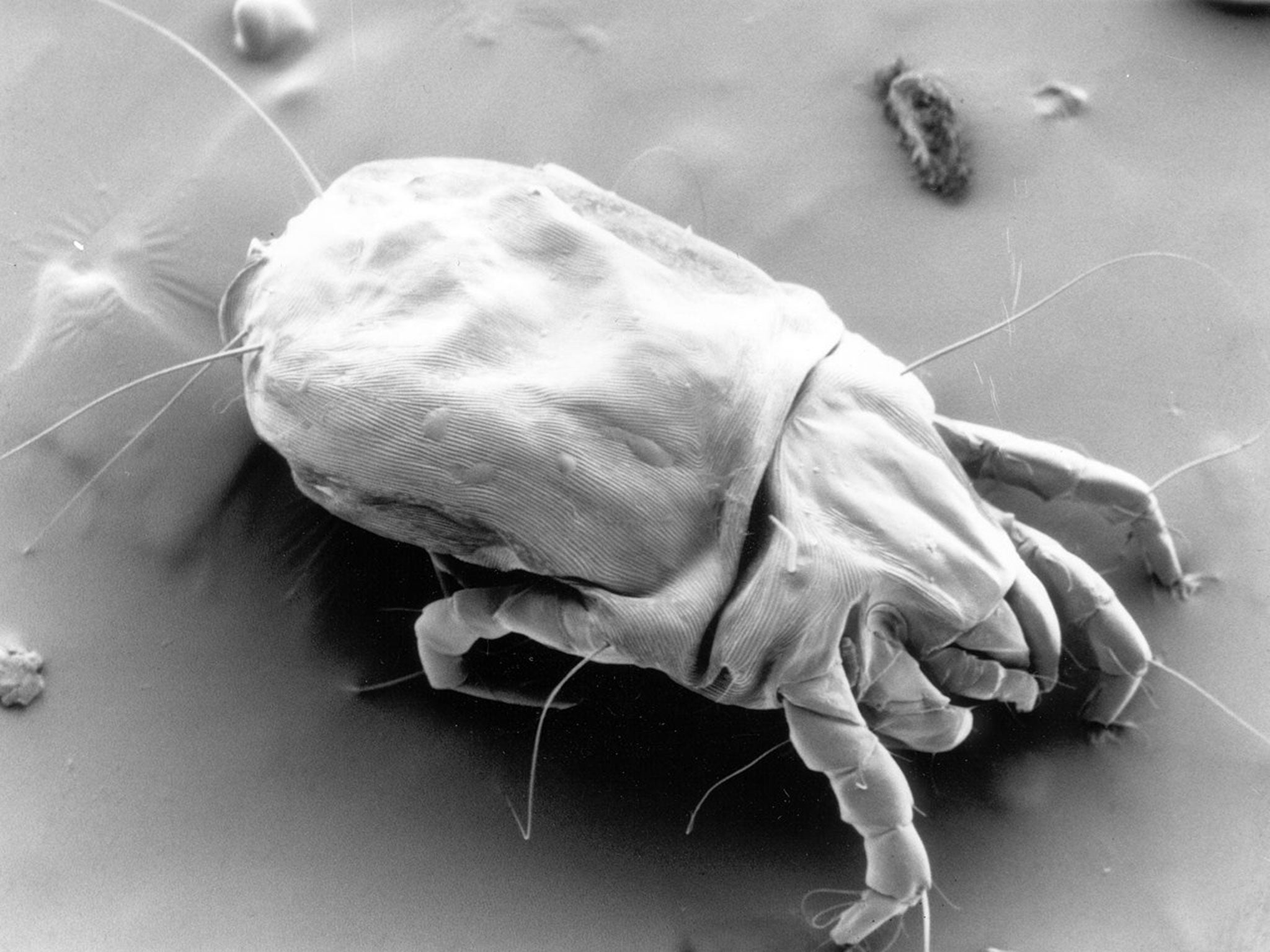The millions of dust mites and germs living in your bed linen could make you seriously ill, according to experts
‘Someone with food poisoning could be excreting salmonella into the bed’

The tiny microorganisms living in your bed sheets leave behind droppings and body fragments that can contribute to colds, asthma and hayfever, whilst the germs present can cause food poisoning.
Even after you wash your sheets, they could still be riddled with dangerous germs, such as Norovirus and Salmonella, which will not be removed just by washing your linen.
The faeces produced by dust mites can bring on allergic reactions, with the body producing histamines to deal with the perceived threat.
It has been suggested that dust mites could be to blame for up to 80 per cent of all asthma cases.
Dr Lisa Ackerley, a home hygiene expert, said: "They can cause rhinitis, a cough, dry eyes. They can disturb sleep. People with other allergies can have them made worse
She also warned that: "If people have a cold, the cold and flu virus. It can survive on the bed linen and it can survive a wash.
"Norovirus can be carried with no symptoms. You might not have pyjamas on, it’s easy to pass it to the linen.
"Someone with food poisoning could be excreting salmonella into the bed."
In addition, every bed has an average of 10 million dust mites living in it.
The organisms thrive in warm and moist environments.
Experts have also suggested that dust mites are encouraged by the collection of human skin cells lining our beds.
Dr Ackerley told the Daily Mail: "Humans shed half an ounce of skin week and a lot of that will be in the bed.
"Dust mites like warm moist environments, the bed’s the perfect environment. They reproduce so there will be about 10 million per bed.
"Often people are away in the day, so they shut the windows and the moisture stays in the house. Houses are more insulated and there are no drafts so there can be a build up of humidity.
"If you make the bed when you go out that traps the duvet and the moisture, and the dust mites have a great time. In two years, 10 per cent of the weight of a pillow will be made up of dust mites and their droppings”, she added.
"Just because it looks and smells clean, doesn't mean it's hygienically clean. People have this notion that simply putting dirty items into a washing machine will kill all germs, but that's just not the case. Contagious bacteria and viruses such as Influenza and E.coli can survive low temperature washing, increasing the potential risk of infection for your family."
For laundry washed at low temperatures, she said, use an antibacterial laundry disinfectant.
The faeces produced by dust mites can bring on allergic reactions, with the body producing histamines to deal with the perceived threat.
It has been suggested that dust mites could be to blame for up to 80 per cent of all asthma cases.
Dr Ackerley said: "They can cause rhinitis, a cough, dry eyes. They can disturb sleep. People with other allergies can have them made worse
She also warned that: "If people have a cold, the cold and flu virus. It can survive on the bed linen and it can survive a wash.
"Norovirus can be carried with no symptoms. You might not have pyjamas on, it’s easy to pass it to the linen.
"Someone with food poisoning could be excreting salmonella into the bed."
In order to stop dust mites from colonising the bed, she said hoovering regularly is important, and having hard floors rather than carpets means fewer will survive.
Leaving open a window to let some of the moisture and humidity out will also help, she added.
Subscribe to Independent Premium to bookmark this article
Want to bookmark your favourite articles and stories to read or reference later? Start your Independent Premium subscription today.

Join our commenting forum
Join thought-provoking conversations, follow other Independent readers and see their replies